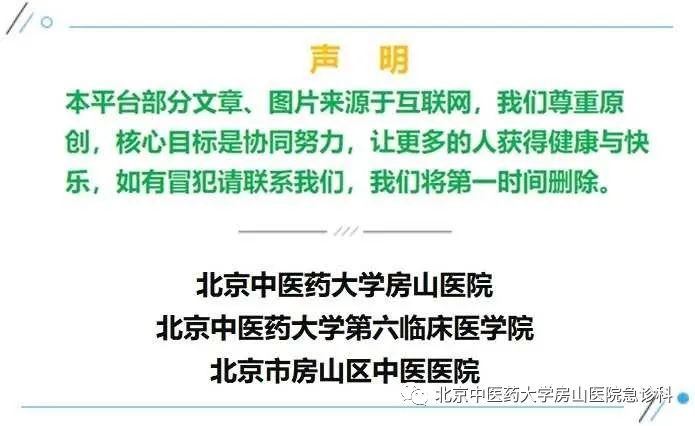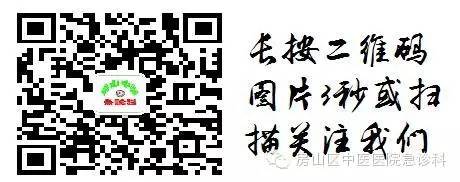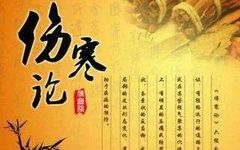
328. In cases of cold damage with a slow pulse lasting six to seven days, if treated with Huangqin Decoction (Huángqín Tāng) to clear heat, the pulse is slow indicating cold. If the abdomen feels cold and the patient cannot eat, but instead can eat, this is termed “removal from the center” and is a sign of imminent death.
Liu Duzhou’s analysis: This statement discusses the principle of avoiding cold and cool medicines in cases of cold damage with a slow pulse and diarrhea. A slow pulse indicates cold dampness, which belongs to Yang deficiency. If abdominal pain and diarrhea occur, one should use Si Ni San (Sì Nǐ Sān). However, here it is mistakenly believed to be a case of Shaoyang and Taiyang combined disease, using Huangqin Decoction to clear heat, which damages the Yang Qi of the spleen and stomach. Logically, the patient should not be able to eat, but instead, they can eat, indicating that the stomach Qi is about to collapse, and they are self-rescuing through food.
For the three Yin cold patterns, one must not only observe the Yang Qi but also the spleen and stomach. If the spleen and stomach can mobilize the Qi and blood of the organs, the righteous Qi can gather. The heat that appears with cold diarrhea is merely a false appearance and should not be mistaken for Yang patterns; otherwise, the consequences could be dire.
329. In cases of cold damage, if there is first a cold extremity followed by fever, diarrhea will naturally stop. However, if sweating occurs and there is pain in the throat, this indicates a blockage in the throat. If there is fever without sweating, diarrhea will naturally stop; if it does not stop, it will lead to purulent blood. If there is purulent blood, the throat is not blocked.
Liu Duzhou’s analysis: This statement should be understood in conjunction with the previous one. The recovery of Yang Qi after cold extremities and fever is a good sign, but if it is excessive, it can lead to disease, manifesting differently above and below. Excessive Yang Qi can injure Yin blood, leading to sores all over the body and throat blockage, resulting in purulent blood. In cases of cold damage with cold extremities, how can one determine if it is a reversal of Jueyin or Shaoyin? In Shaoyin reversal, there is no subsequent fever, while in Jueyin reversal, there is a subsequent fever.
Throat blockage is an ancient symptom name referring to swelling in the throat, which occurs when Yang Qi is excessive, leading to sweating and throat blockage; another type occurs with fever without sweating, where the pathogen descends, and if diarrhea does not stop, it will lead to purulent blood.
330. In cases of cold damage lasting one to two days, if cold extremities occur by the fourth or fifth day, fever will inevitably follow. If there is prior fever, there will be subsequent cold extremities; if the cold extremities are deep, the fever will also be deep; if the cold extremities are mild, the fever will also be mild. If cold extremities are expected to descend, but sweating occurs instead, the mouth will be injured and ulcerated.
Liu Duzhou’s analysis: This statement actually includes later discussions on warm diseases. Cold damage arises from external pathogens, and cold extremities arise from fever. The sequence is first fever, then cold extremities, termed “heat extremities”; the characteristics are overall body heat with cold hands and feet, indicating that Yang is constrained internally, and Yin and Yang are not in harmony. The relationship between Yang heat and cold extremities is proportional. At this time, one should use methods to break the Yang and promote Yin, allowing Yin and Yang to harmonize. Cooling medicines, including purgatives and bitter cold heat-clearing medicines, should be used. If warming and spicy medicines are used, it will cause the heat pathogen to attack upwards, leading to mouth injuries and ulcerations. One should also avoid using Si Ni Tang (Sì Nǐ Tāng), as it will exacerbate the cold extremities and may even lead to confusion and delirium.
Clinically, it is important to distinguish between heat extremities and cold extremities. Heat extremities generally present as first fever then cold extremities, with red nails, yellow tongue coating, and a pulse that may be deep but strong, or deep and slippery, possibly accompanied by irritability, thirst, constipation, and red urine; cold extremities present with clear diarrhea, mild coldness, a deep and weak pulse, pale tongue, but a desire to sleep, among other cold signs.



